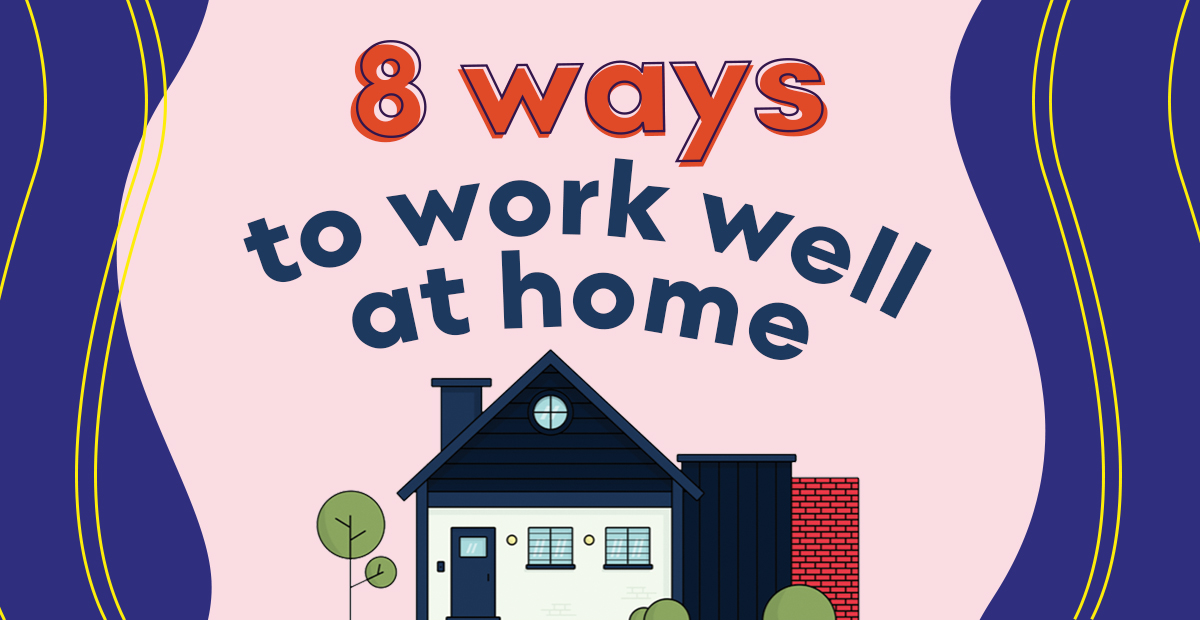
The new challenges of working from home long-term might take some getting used to, so here are a few best practices to help keep you productive, collaborative, creative and sane.
Set a strict schedule
It’s important to create a schedule and stick to it, and to maintain an “I’m going to work” outlook. Wake up at your normal time and pace your day just like you would at the office. It can be tough to balance not getting distracted and not overworking long past the time you would normally call it quits at the office, when at home. Avoid distracting habits like leaving the TV on or frequently tending to personal tasks throughout the day that you wouldn’t have given a thought to if at the office. Conversely, put your work devices away after you’re done for the day to create firm distinctions between personal and work time at home. If you have kids, structure your work around their breaks and downtime, and switch off with your spouse if possible as a way of blocking off periods of time devoted strictly to work.
Get dressed
It can be tempting to stay in your pajamas during a workday at home, but showering and putting on real clothes just like any other day at the office can help establish a routine. Not to mention, in the face of prolonged staying in, it can help improve your state of mind and mentally prepare you to start a day of work.
Staying connected means embracing technology
As remote work becomes increasingly common, it’s critical to create seamless virtual experiences as we’re connecting with one another. Video conferencing should feel just like an in-person meeting. It’s time to get comfortable with the webcam (all the more reason to pay attention to tip #2… your colleagues don’t normally see your bed-head, so video calls might be the motivation some of us need to keep it that way.) It’s critical that we communicate more frequently than we think we need to. Connect with your team daily and make use of all the technology we have at our disposal to maintain open lines of communication.
Some of our studios are already benefiting from daily WebEx check-ins with every member of the studio, like a morning “Roll Call” to discuss goals for the day, job by job so everyone has the benefit of hearing what others are doing. This allows for cross-pollination, idea sharing and leveraging expertise. An evening “Debrief” provides an opportunity to discuss the day’s accomplishments, review any shortcomings and strategize on next steps. Each team works differently, but now is the time to establish new workflows and ways of checking in with coworkers.
Make a dedicated workstation
Going to the same designated place on a regular basis can help keep your mind from wandering and allows you to better focus. Create a dedicated workstation (your bed doesn’t count!) preferably with natural lighting and seating that supports good posture. If you don’t have an entirely separate room to devote to this, identify an area with minimal traffic from family or roommates that’s removed from any high-traffic shared spaces.
…But move around
Now that your workstation is set up, remember to get up and move from time to time. Consider how frequently you’re moving at the office—you’re refilling water or coffee, meeting with colleagues, going up and down the stairs or walking to lunch. Just like sitting the entirety of your day at the office is unhealthy, sitting all day at home can be just as detrimental. During this time of prolonged remote work in the name of social distancing, it’s important to not let cabin fever sit in. Take your dog (or cat) for a walk, get up to stretch or maybe even try to set up a standing desk (or countertop) for part of the day.
Tidy up
We all work at varying levels of tidiness, but it can be helpful to stay organized when working from home. If you don’t normally have a workstation in your house, do your best to keep it from getting messy as a way of maintaining a separation of work and personal. Take time each day to organize, wipe down your surfaces, screens, keyboards and devices to not only keep your space from getting cluttered, but to minimize the spread of germs.
Take a lunch break (and breaks in general)
Some days it seems impossible to make time to even drink enough water, let alone take a full lunch break, yet a recent study shows that 90% of American workers feel more productive and recharged after taking a lunch break. It’s proven that for every hour worked, a 10-minute break can help clear the mind and re-focus on the task at hand. Let your team know whenever you’re going to be out of pocket for more than a few minutes to limit any gaps in communication.
Prepare for disruptions
Even if you live alone, it’s likely that you’ll be faced with distractions that you might not find at the office—the neighbor’s dog won’t stop barking, the endless jackhammering from the nearby construction site, or that pile of laundry might be calling your name. Consider investing in noise cancelling headphones and designate specific times for housework that don’t conflict with project needs. If you’ve got a full house with some combination of kids, spouses, pets or roommates, try to set hard boundaries for when you need time to work and when it’s okay to unplug and say hi.
Have any other tips or strategies for keeping healthy, focused and connected while at home? Any parents finding hacks for balancing a full project load, deadlines, conference calls and caretaking? Leave us a comment!




